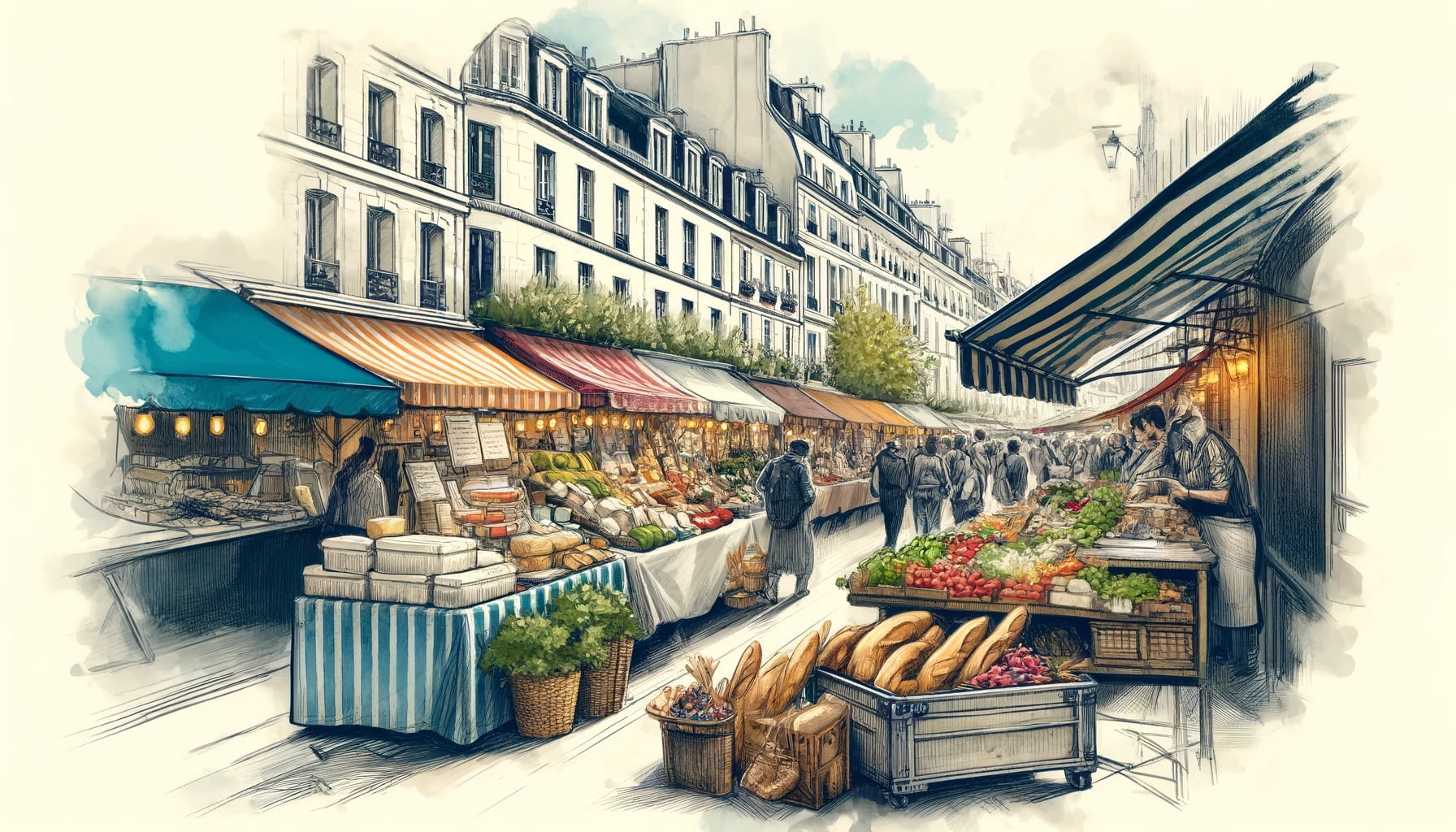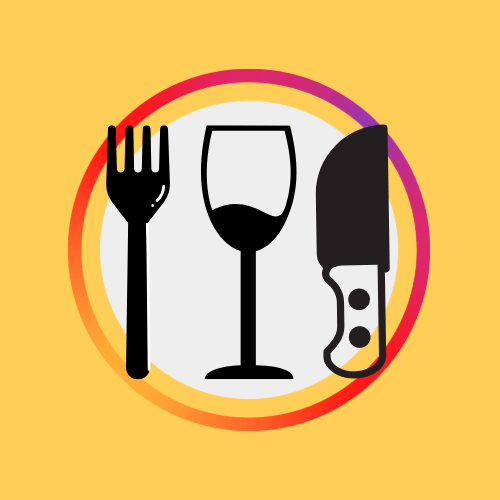It’s been a few months since I launched this french food blog dedicated to my love of french food and the joy I take in sharing that with the world via my food tours in Paris. But I know now that when it came to choosing the name, I made a mistake…
As someone who has immersed themselves in the deep cocottes of French cuisine, I can confidently say that naming my blog “Eat Like the French” was a huge mistake.
Why the name ‘Eat Like the French’ was a Mistake and completely missed the mark
As a chef trained in France and a Brit who has lived here for over a decade, I should have known better. This name fails to capture the intricate diversity and evolution of how people in France actually eat. Living here since 2001, I’m constantly reminded that modern French people don’t conform to a single way of eating. The Parisiennes, with their sophisticated urban tastes, are worlds apart from the hearty, rustic fare found in the most rural parts of France.
Painting everyone with the same brush stroke is a mistake. France is a vast and diverse country, and the way the French eat today has evolved significantly from the past. There are culinary inventions that transcend food history but are often forgotten in contemporary France. This blog post aims to set the record straight for many who may wonder why a pragmatic Brit living in France, observing the real eating habits of the French today decided to call his french food blog, eat like the french.
“eat like the french” was the wrong name for a french food blog because:

A wonderful map of French food by region, made in 1929 by Chef Alain Bourguignon. Source
Diversity of French Cuisine Across Regions
One of the greatest misconceptions about French cuisine is that it’s a monolithic entity, a singular culinary tradition that all French people adhere to. In reality, the diversity of French cuisine is as vast as the country’s geography and cultural heritage. Each region of France boasts its own unique flavors, ingredients, and culinary techniques, shaped by centuries of history and local traditions.
Take the people of Marseille, for example. While the city is famed for its bouillabaisse, a rich seafood stew that reflects its maritime heritage, and Provençal dishes infused with the flavors of garlic, olive oil, and herbs, the daily reality is quite different. Marseillais are just as likely to be seen indulging in pizza and kebabs, a testament to the city’s vibrant, multicultural population and its love for simple, hearty fare that satisfies.
Moving to the heart of France, the Auvergnats are renowned for their hearty, rustic dishes like potée auvergnate, a comforting stew of pork, cabbage, and root vegetables. But there’s more to their story. Thanks to their warm hospitality and knack for building connections, the Auvergnats have carved out a significant niche in the French restaurant world, wielding influence like culinary mafiosi. Their establishments dot the French landscape, from humble bistros to upscale eateries, proving that their reach extends far beyond their regional borders.
The Bretons, meanwhile, are celebrated for their crêpes and cider, products of a land where apple orchards and dairy farms dominate the landscape. But let’s not mince words: the Bretons are also known for their prodigious drinking habits. Their convivial gatherings often involve generous amounts of cider and spirits, making them legendary for their ability to enjoy a good drink—or several.
Then we have the Normans, whose culinary repertoire includes luxurious Camembert cheese and rich, creamy dishes that showcase the region’s dairy prowess. But their influence goes deeper than that. The Normans’ famed victory feasts after the Battle of Hastings in 1066 and their subsequent impact on the English language have contributed to the perception of French food as regal and refined. This historical legacy is one reason why French cuisine is often associated with nobility and sophistication.
This regional variation is not just a quaint relic of the past; it’s a vibrant and integral part of French life today. To reduce French cuisine to a single narrative is to overlook the rich mosaic of flavors that define this country’s culinary identity. So, when someone tells you to “eat like the French,” it’s worth asking: which French?

Modern Eating Habits in France: Beyond Tradition
The romanticized image of French dining—long, leisurely meals with fresh baguettes and exquisite dishes—has shifted significantly in modern times. Today, fast food, microwave meals and food delivery services have become a France-wide phenomenon, reflecting changes in lifestyle and cultural influences.
In the 1960s, 70s, and 80s, the French were enamored with American culture, welcoming establishments like McDonald’s into iconic Parisian buildings. This trend has continued, and today, the burger has become the most popular dish in France, appearing on menus across the country.
Pizza, too, has become a staple of the French diet, largely due to the influx of Italian immigrants since the 1950s. While good, cheap pizza is more prevalent in the south, Paris and even London boast their own pizza champions, offering a variety of high-quality options.
Another often overlooked aspect of modern French cuisine is the microwave meal. Yes, they exist in France, and they are surprisingly good. Stores like Picard offer a wide range of gourmet frozen foods, including mini foie gras macarons and vol-au-vent canapés, which are staples at contemporary French apéros.
The iconic baguette, however, remains a king among French street foods, especially in Paris. It’s often the go-to quick meal, easily found and enjoyed by everyone.
But despite these modern trends, it’s important to remember that French people are diverse, and their eating habits are continually evolving. From the sophisticated dishes of Paris to the hearty, multicultural cuisine of Marseille, and the influence of historical legacies in Normandy, French cuisine is a dynamic and multifaceted tapestry.
Understanding these modern eating habits and the regional diversities enriches our appreciation of French cuisine and highlights the importance of not painting all French people with the same brush. This nuanced perspective not only showcases the richness of French culinary traditions but also underscores the pragmatic, evolving nature of how the French eat today.
Breaking the Stereotype: Diverse French Eating Habits
As a chef, I’ve learned that catering to diverse tastes is crucial—no one likes their steak cooked the same way, and some don’t eat steak at all. This diversity is mirrored in French eating habits. While traditional dishes remain beloved, modern influences and individual preferences have created a dynamic culinary landscape. Painting all French people with the same culinary brush oversimplifies and undermines the rich diversity that defines French cuisine. Each region and individual contributes to a vibrant and evolving culinary landscape.
Will I change the name of my French Food Blog?
In short
NO
Here’s why.
Taking a consumer first approach to tackling the challenges of understanding french food.
I have always wanted to have a food blog, but I never knew how to go about it. Over the last 18 months I have spent thousands of hours researching and understanding french food culture. That took the shape of some statistical analysis – which I have shared as an open source tool for other bloggers and creators in France to use.
After that, I spent a year pounding the streets of Paris leading food tours for and getting a on the ground experience with people visiting france and paying for food tours. The question that came up the most are “how do the french eat” and “what do the french eat”. Many visitors to France have a romanticised view of how the french eat and want to learn more about it.
Thats how I came to the name, I didn’t want to cause offence or pain to anyone.
My French Food Blog, My Unique Perspective: The Brit in France Advantage
My french sister in law asked me the other day;
“why would someone want to listen to someone who isn’t french talk about french food?”
However, I see this as a huge advantage.
Having lived in France on and off since 2001, I bring a unique vantage point that many native French people might lack. Straddling multiple cultures allows me to appreciate the nuances of French cuisine while offering insights that bridge cultural gaps. French natives may be too close to their culinary traditions to notice the subtle evolutions and regional diversities that I, as an outsider, can highlight. My training as a chef in France and my background as a Brit enable me to translate these experiences into accessible narratives for a broader audience, making the complexities of French cuisine relatable and exciting.
Discover the Best Food in France thanks to this French Food Blog
Despite the diversity and evolution of eating habits in France, I still believe that France has the best food in the world and that the French enjoy it in the best manner.
Our mission on this blog is to share a real world and unromanticised perspective of how the french really eat. So you can discover the best food and experience the best things france has to offer.
From the sophisticated dishes of Paris to the hearty, rustic fare of the regions, French cuisine offers a unique and unparalleled culinary experience. I encourage you to come and visit, explore the rich culinary landscape, and discover for yourself the true essence of eating like the French.
Hungry for more? Explore each of our food blog categories to find your next foodie read;
Bon appétit!
Love this? Get more real, unfiltered food stories straight to your inbox. No fluff, no spam—just damn good food writing and all for free!

From the bustling streets of Paris to the heat of a professional kitchen, my life has always revolved around food. A Brit who moved to France at 16, I trained as a chef in a Parisian palace kitchen at 18 and have spent decades cooking, eating, and living like the French.
By day, I run kitchens and events, but Eat Like The French is my side hustle—a way to share my passion for French food through writing and food tours. After a detour into tech recruitment, I returned to what I love most: cooking and storytelling—one dish, one tour, and one bite at a time.


Loved reading this — it’s so refreshing to see an honest take on what works and what doesn’t when writing about something as rich and beloved as French food. Your voice feels warm and relatable, which makes your content stand out even more. Can’t wait to see what delicious stories come next!
I found your writings very much informative.Much appreciatate